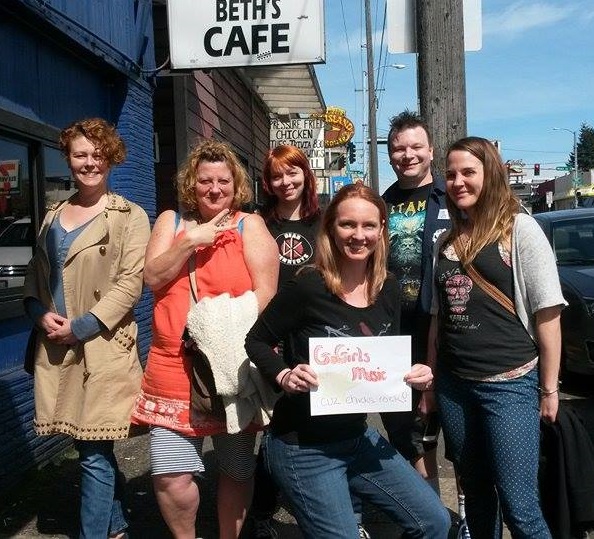I was recently introduced to singer-songwriter Mary Bue from Minnesota. We got along like a house on fire from the start – she’s smart, funny, spunky, and resourceful (and a great songwriter and musician.) In the process of getting to know her, Mary mentioned this “Bands Banding Together” Kickstarter project she was involved in over the past few months with a recording studio called Welcome to 1979.
The campaign started with a contest in which the studio sought bands willing to travel to the Welcome to 1979 studio in Nashville to record an album live direct to lathe (vinyl). This is actually a very old recording technique which has recently experienced a trendy comeback, including a direct to vinyl live performance by Neil Young and recorded by Jack White on Jimmy Fallon’s The Tonight Show.

Once the bands were selected by the studio, they committed to help promote the Kickstarter campaign (which was set up and run by the studio) to their fan networks, and also to provide merchandise for some of the premiums. The campaign had a fundraising goal of $25,000, which would enable Welcome to 1979 to record the five bands live in the studio, one at a time, and then release five vinyl records. Each band would also get some vinyl records of their recording to take home out of the deal.
An Interesting Crowd Funding Model
I think this is such an interesting model for crowd funding a record. It makes a lot of sense in many ways: the studio is incented to make the campaign successful, because they are paying themselves, and the combined fan groups for both the studio and the artists involved would theoretically make for a wider audience for the campaign. However, there are also a lot of potential pitfalls in this model.
I did some research, and couldn’t find other examples of studios doing crowd funding campaigns on behalf of musicians except for one, Groove Box Studios for Nathan Kalish, but it was a much smaller amount. [Thanks to Ian Anderson at Launch and Release for finding that one for me].
Let me be clear: no one was ripped off, and I don’t think anything shady went on here. I think everyone just felt disappointed that the project didn’t succeed, and some fan goodwill was expended. Perhaps we can all learn from this.
[Tweet “This campaign was pitched as being about the process of recording live to vinyl.”]
I think the much bigger takeaways are about the planning and coordination needed to implement a joint Kickstarter between 5 bands and a studio.

